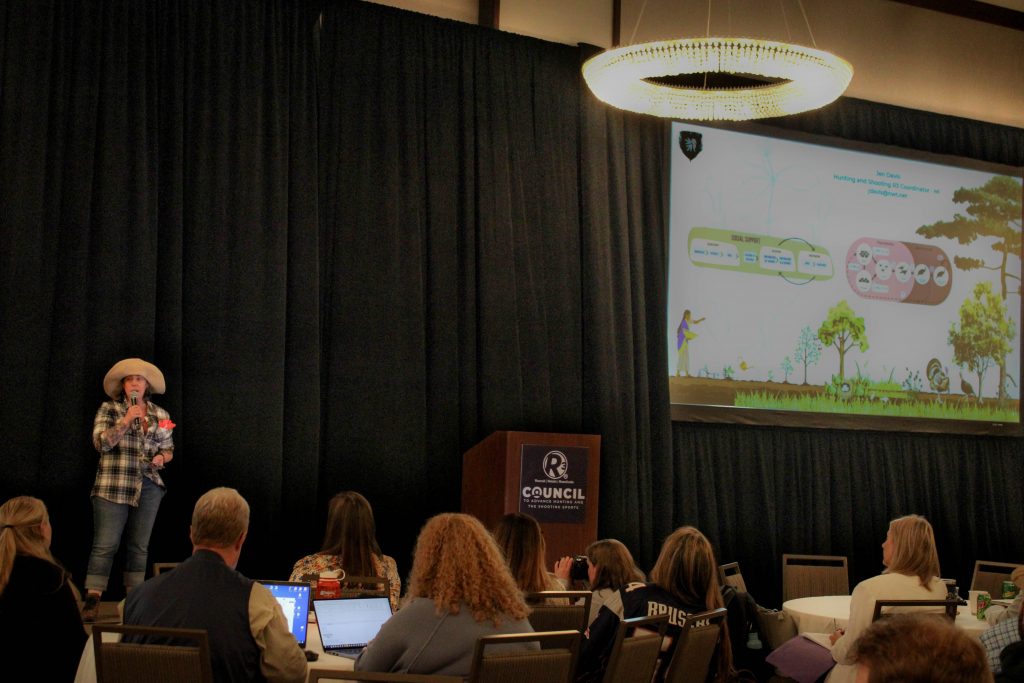NWTF Staff Attend the 2025 R3 Symposium
EDGEFIELD, S.C. — The Council to Advance Hunting and Shooting Sports (CAHSS) hosted its annual National R3 Symposium, bringing together state agencies and non-governmental organizations involved in hunting, shooting sports, fishing and other outdoor industries across the country. The NWTF’s Education and Outreach team attended the symposium to collaborate and showcase the NWTF’s efforts to recruit, retain and reactivate new hunters, along with building public support for hunting among non-hunting Americans.
R3 (Recruit, Retain and Reactivate), is a national initiative aimed at increasing participation in hunting and the shooting sports, and the education of the public on the contributions that hunters and shooters make towards wildlife conservation, which is vital for preserving the traditions of these activities. The NWTF utilizes R3 to fulfill its mission of preserving North America's hunting heritage.
Throughout the week of the symposium, various sessions covered how hunting and shooting participation has changed over the years. The CAHSS hosted a foundational R3 training session to kick off the 4-day symposium. Taniya Bethke, director of operations for the CAHSS, showcased the broad trends of hunting participation to help new R3 professionals understand why efforts are essential for protecting our hunting heritage.
As America’s population continues to increase, the number of hunters is decreasing, which was quantified by license sales per year. Bethke explained that this is because our country is becoming more diverse, and to account for those changes, new R3 curriculums must urge staff and volunteers across the country to meet people where they are and host more unique events.
The foundational training also gave new R3 coordinators a thorough understanding of ‘tactics’ they can use to host more unique events for those more diverse crowds. Matt Dunfee, the director of special programs at the Wildlife Management Institute, said that many R3 efforts are aimed at recruiting new hunters, but there is a 65% lapse rate of hunters, which means more efforts need to be put towards retaining and revitalizing hunters. Dunfee also presented the Outdoor Recreation Adoption Model (ORAM), a linear model that shows the steps an individual moves through as they learn about, try and then adopt a new activity. The model is also used to understand the difference between recruitment, retention and reactivation.
During the seminars, researchers studying R3 trends had the opportunity to share their results. To showcase a more diverse wave of hunters, Scott Lavin, the CAHSS director of research and partnerships, showed that more than 50% of new gun owners are under the age of 40 years old, and in 2024, Asian and African Americans were the largest portion of new clay-target shooters.
Another significant focus of this year’s symposium was using social media, storytelling and marketing in the R3 space. During a presentation on the public’s attitude toward hunting, Mark Damian Duda, founder and executive director of Responsive Management, emphasized that hunting does not exist without cultural support, and right now, societal belief changes are working against us. Changing perspectives starts with being more mindful about what they’re posting and to start emphasizing that our natural resources are a space for everyone, not just those already involved.
Jen Davis, NWTF hunting and shooting coordinator for Michigan, presented during the symposium’s R3 minutes, a fun competition designed to allow presenters the opportunity to highlight their best R3 efforts in rapid succession.

Davis presented on how important it is to have community to retain hunters. To do this, she drew an analogy between wild turkey population dynamics and R3 efforts. Both hunters and turkeys are “K-selected species,” an ecology term for a species that possesses relatively stable populations and tend to produce relatively low numbers of offspring, as long as they maintain a stable nurturing environment. The end of her presentation gave a final nod to the conservation success story of the wild turkey as a rallying call to stick with the slow, difficult work of growing new hunters.
This year’s R3 symposium was an excellent opportunity for organizations, including the NWTF, to continue the discussion on how to improve upon current R3 models. NWTF R3 coordinators are energized and excited to bring what they’ve learned back to their home regions and continue to work toward elevating the life-changing power of the outdoors.

About the National Wild Turkey Federation
Since 1973, the National Wild Turkey Federation has invested over half a billion dollars into wildlife conservation and has positively impacted over 24 million acres of critical wildlife habitat. The NWTF has also invested over $10 million into wild turkey research to guide the management of the wild turkey population and to ensure sustainable populations into perpetuity. The organization continues to deliver its mission by working across boundaries on a landscape scale through its Four Shared Values: clean and abundant water, healthy forests and wildlife habitat, resilient communities, and robust recreational opportunities. With the help of its dedicated members, partners and staff, the NWTF continues its work to provide Healthy Habitats. and Healthy Harvests. for future generations.
